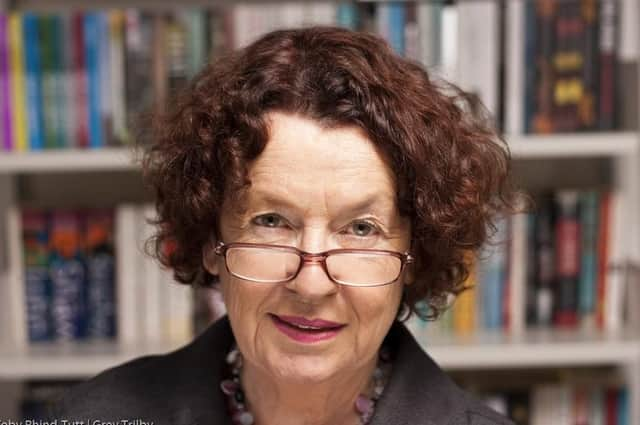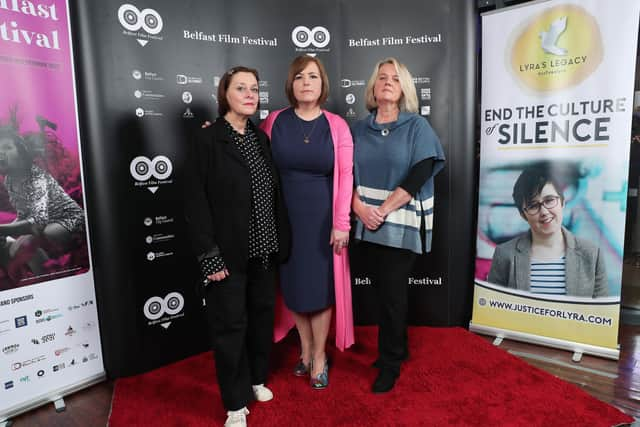Ruth Dudley Edwards: A draining Sunday visiting killing sites along the border, then at Lyra McKee film


It caused among many other emotions sadness, despair and occasionally laughter, during a tour of killing sites and memorials in south Armagh and at the launch in Belfast of a documentary on my murdered friend Lyra McKee, so wee and untouched by her 29 years that horrified on-lookers reported: “There’s a kid shot in the head.”
I was with my friends, Sunday Independent columnist Máiría Cahill, and Professor Liam Kennedy — author, most recently, of the riveting Who was Responsible for the Troubles? — both of whom like me, grew up in a nationalist world but had mind-changing experiences in adulthood, made friendships with unionists, try to keep our minds open and are preoccupied with finding out and disseminating the whole truth about the complex past and present of Northern Ireland.
Advertisement
Hide AdAdvertisement
Hide AdI won’t name our guide, since he doesn’t wish to be identified, but he was exceptionally knowledgeable about the area and is an enemy of sectarianism whom I will call Joe.


We three passengers are old hands, sufficiently well-informed about much of the bloody history of the many places and dozens of names of victims and perpetrators to recognise what we were hearing and seeing.
Full marks to Joe and Máiría, who instantly recognised the old man politely acknowledging Joe’s courtesy in giving way to his vehicle as Thomas ‘Slab’ Murphy, whose extensive, shabby, border-straddling house had just been pointed out to us.
When he was found guilty in 2015 of tax evasion by the Special Criminal Court in Dublin he was described by Gerry Adams and Mary Lou McDonald as “a good republican,” with McDonald adding that he was “very nice” and a “very typical rural man of that age” from South Armagh.
Advertisement
Hide AdAdvertisement
Hide AdThat seems a bit offensive to typical rural men in the area since others have unkindly described Slab as a former Chief of Staff of the IRA.
We visited a site near Newry where Eamon Collins, a former member of the Provisional IRA was beaten and killed by having a spike driven through his face in 1998 near his home.
He was hated by the terrorists for turning against them and his murder took place eight months after testifying against Murphy in a libel case which he lost.
Joe showed us sites of Glenanne Gang attacks in Whitecross (the three Reavey brothers) and Altnamackin (the shooting of Catholic civilians Sean Farmer and Colm McCartney on their way home from Croke Park) and we looked at the home of James Mitchell, an RUC reservist and the owner of the farm that gave these mass murderers their name.
Advertisement
Hide AdAdvertisement
Hide AdIn Whitecross we saw where in 1976 free-lancing Provos murdered ten Protestants on Kingsmill Road and on Ballymoyer Road a paratrooper killed twelve-year-old Majella O’Hare, and the place in Jonesborough in 1989 where Chief Superintendent Breen and Superintendent Buchanan were ambushed by the IRA after a visit to a garda station across the border.
The most heart-wrenching moment for me was at the memorial to the three soldiers killed by a bomb attack at the Glenanne UDR Base when Joe told us of the young UDR woman who witnessed the aftermath of the explosion and would die of the alcoholism that she fell into to blur her unbearable memories.
What I particularly carried away were images of innumerable memorials to 1981 hunger strikers — which have proliferated 40 years on as Sinn Féin continues its campaign to have these ten convicted terrorists recognised by the Irish state as on a par with James Connolly, Patrick Pearse and the other 1916 executed leaders it honours.
In many places, photos of these young men showed how long each had remained on hunger strike, setting up a bizarre sense that there was a suffering competition, lost by Martin Hurson at the bottom of the score card with 46 days of agony compared at the top a terrible 73 days for Kieran Doherty.
Advertisement
Hide AdAdvertisement
Hide AdYoung people throughout the area and elsewhere are being told that these victims of the republican cult of death are role models yet they were trained to be ruthless killers and young people programmed by hard men to kill and die fruitlessly for a united Ireland.
Joe told us a great deal about the contemporaneous movement of population, particularly in some areas where segregation increased as for protection Protestants abandoned mixed areas.
There was a lot to discuss, not least the many fine houses built recently, some of them allegedly with the help since 2003 of proceeds of the £26.50 million Northern Bank robbery.
What a waste, we kept thinking.
As did my companion and friend Ann Travers of SEFF, whose sister Mary was murdered as the IRA tried to kill their parents, and the rest of the audience at the premier of Alison Miller’s brilliant documentary, which used Lyra’s videos, recordings and words to bring her back to us.
Advertisement
Hide AdAdvertisement
Hide AdWhat led to the snuffing out the happy life of this vibrant, gifted young woman, a passionate, non-partisan seeker after truth who ignored the sectarianism of Ardoyne to embrace most humans and exuded understanding, love and humour?
It’s just called Lyra McKee.
Don’t miss it.
• Other comment pieces below, and beneath that information on how to subscribe to the News Letter
• Kenny Donaldson Nov 9: Amnesty admission makes mockery of Irish legacy criticism of Britain
• Owen Polley Nov 8: Violence will hinder campaign against Irish Sea border
Advertisement
Hide AdAdvertisement
Hide Ad• Henry McDonald Nov 6: My family’s roots that bind us to Ypres and the Somme
• Ben Lowry Nov 6: A poll that finds support for UK, DUP and ending protocol checks – not something you hear often
• Ruth Dudley Edwards Nov 2: Stephen Nolan seen as a hero in GB for his reports into Stonewall
• Writers Oct 30: We probe Irish nationalist myths in our new book which defends the Union
Advertisement
Hide AdAdvertisement
Hide Ad• Peter Robinson Oct 29: SF finance minister’s fiscal policy is to hold out his hand for more UK cash
• Henry Patterson Oct 27: Terror is being legitimised in Basque Country as it is in NI
• David Montgomery Oct 28: Put NI politicians at heart of the talks to resolve the dispute over the protocol
• Other columns by Ruth click here
——— ———
A message from the Editor:
Thank you for reading this story on our website. While I have your attention, I also have an important request to make of you.
Advertisement
Hide AdAdvertisement
Hide AdWith the coronavirus lockdowns having had a major impact on many of our advertisers — and consequently the revenue we receive — we are more reliant than ever on you taking out a digital subscription.
Subscribe to newsletter.co.uk and enjoy unlimited access to the best Northern Ireland and UK news and information online and on our app. With a digital subscription, you can read more than 5 articles, see fewer ads, enjoy faster load times, and get access to exclusive newsletters and content.
Visit
now to sign up.
Our journalism costs money and we rely on advertising, print and digital revenues to help to support them. By supporting us, we are able to support you in providing trusted, fact-checked content for this website.
Ben Lowry, Editor